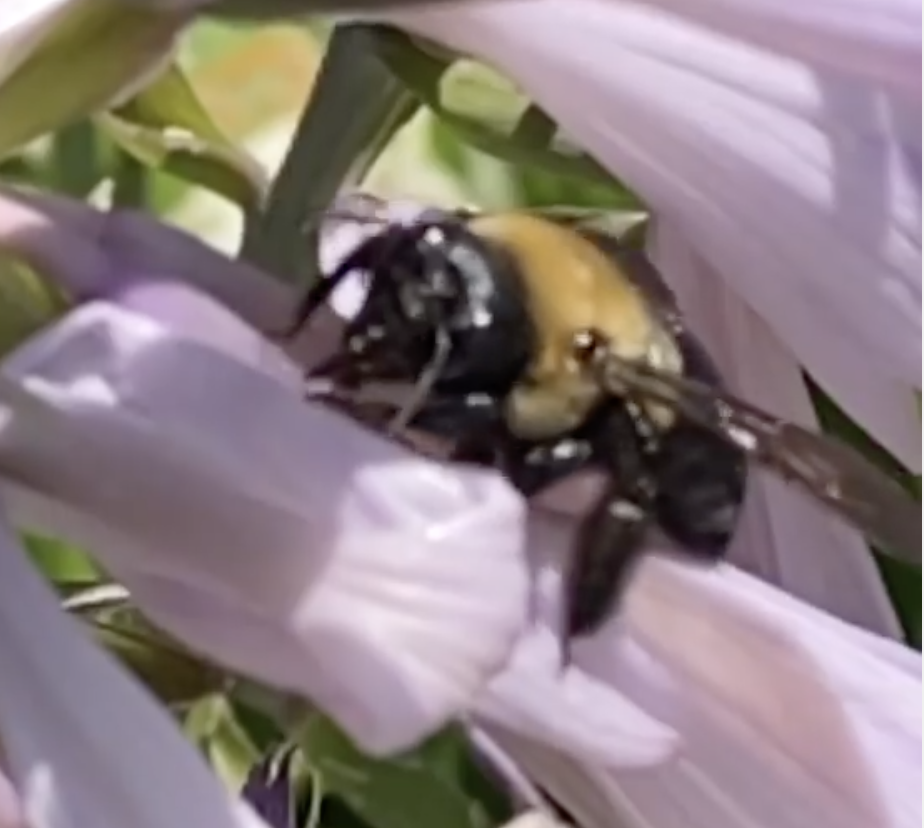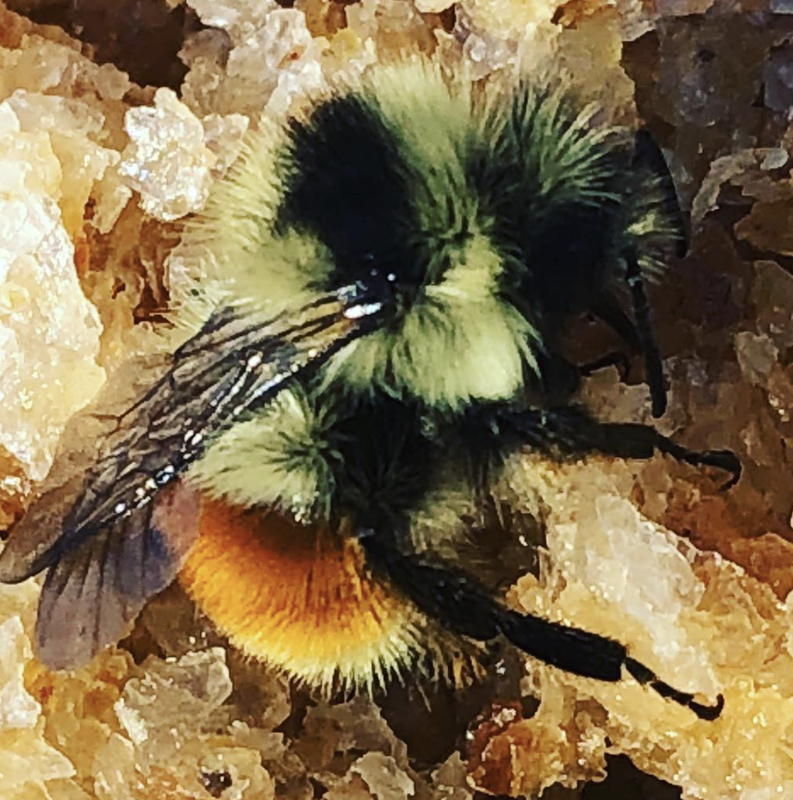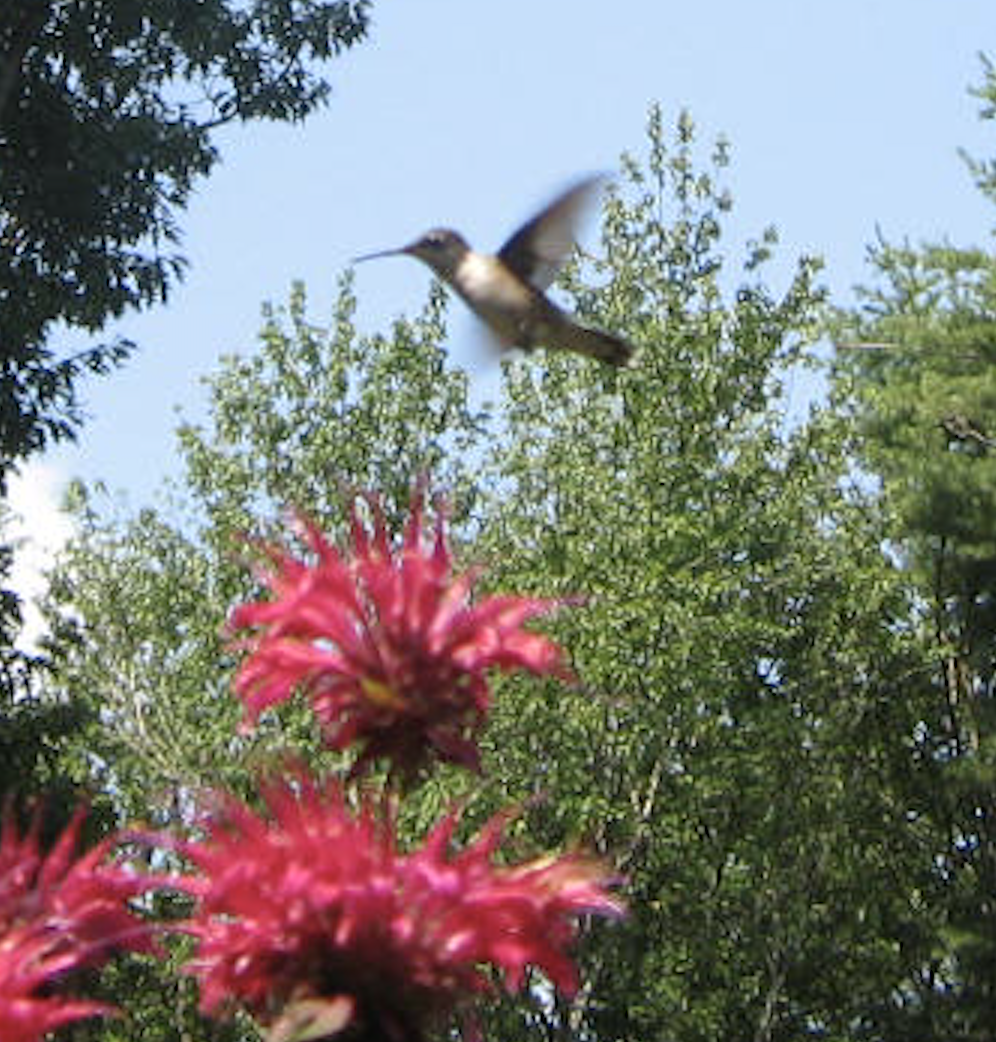Augochlora Sweat Bee (Augochlora pura)
The Augochlora Sweat Bee is a solitary bee that is found in all states of New England. It gathers nectar and pollen for its nest which is typically a burrow in the ground or old tree limbs. This bee can be seen working many of the same blossoms as other pollinators and will stand out with its cool metallic appearance. This bee can come in other colors such as black and blue. It has a stinger but I have handled many of these guys and have never been stung. This picture was taken on a bottle cap which had a little piece of comb, propolis, and honey on it. The bee was eager to pick up an easy meal.
Carpenter Bee (Xylocopa)
The Carpenter Bee is considered a nuisance too many people since they like to place their nests in the wood of some homes. This bee can get territorial and buzzes around its home to try to drive intruders away. They live in solitary hives but groups can live close together giving the impression of a large hive. They are also mistaken as a bumble bees but can be distinguished by their shiny appearance. For all their drawbacks these bees are great pollinators and we see them working many of the same blossoms that our honey bees work. They are also very active in many of the apple orchards we pollinate.
COMMON EASTERN BUMBLE BEE (Bombus impatiens)
The common eastern bumble bee is a native species that lives in small colonies found throughout the New England region. These bees are great pollinators and are well suited for the pollination of many native and non-native species. The hive is typically located in the ground but we have found a couple in bird boxes that still had nesting materials in them. The hives will last only one season and the queens from then hive will burrow for the winter and emerge in the spring to start new hives. The guys can sting and they don't lose their stinger. One got me right in the chest a few years back and it really was giving me the business through my suit. Your really need to get them mad to get them to sting you and I somehow made this the case. The common eastern bumble bee hive is very chaotic compared to a honey bee colony and at the end of the season the hive society breaks down completely. They also will revert to robbing from honey bees in the late fall or in drought conditions if they are not finding forage. The picture above shows an common eastern bumble bee working a native aster with full pollen baskets.
Mason Bees (Osmia)
Orange-Belted Bumble Bee/Tricolored Bumble Bee (Bombus ternarius)
The Orange-Belted Bumble Bee is a 3 colored native pollinator that is found in the Eastern and Northern parts of the United States. It is a bit smaller than the more common bumble bee and has a striking orange belt that helps in identification. While they are listed as having a conservation status of Least Concern, we don't see a lot of them. These bees like golden rod and milkweed blossoms and we usually see them when we observe these blossoms. They typically nest in the ground and they have a similar hive organization as the Common Eastern Bumble Bee.
Ruby-Throated Hummingbird (Archilochus colubris)
The ruby-throated hummingbird is a common site in our are during the summer months. These guys winter in the South and spend their summers in Canada and the eastern states of the USA. They love red flowers and can work many of the same blossoms our bees work. Their rapid flying and working of blossoms mean they are also pollinators. The pollen grains will hitch a ride on the feathers of the bird and drop onto other blossoms as they work them.




